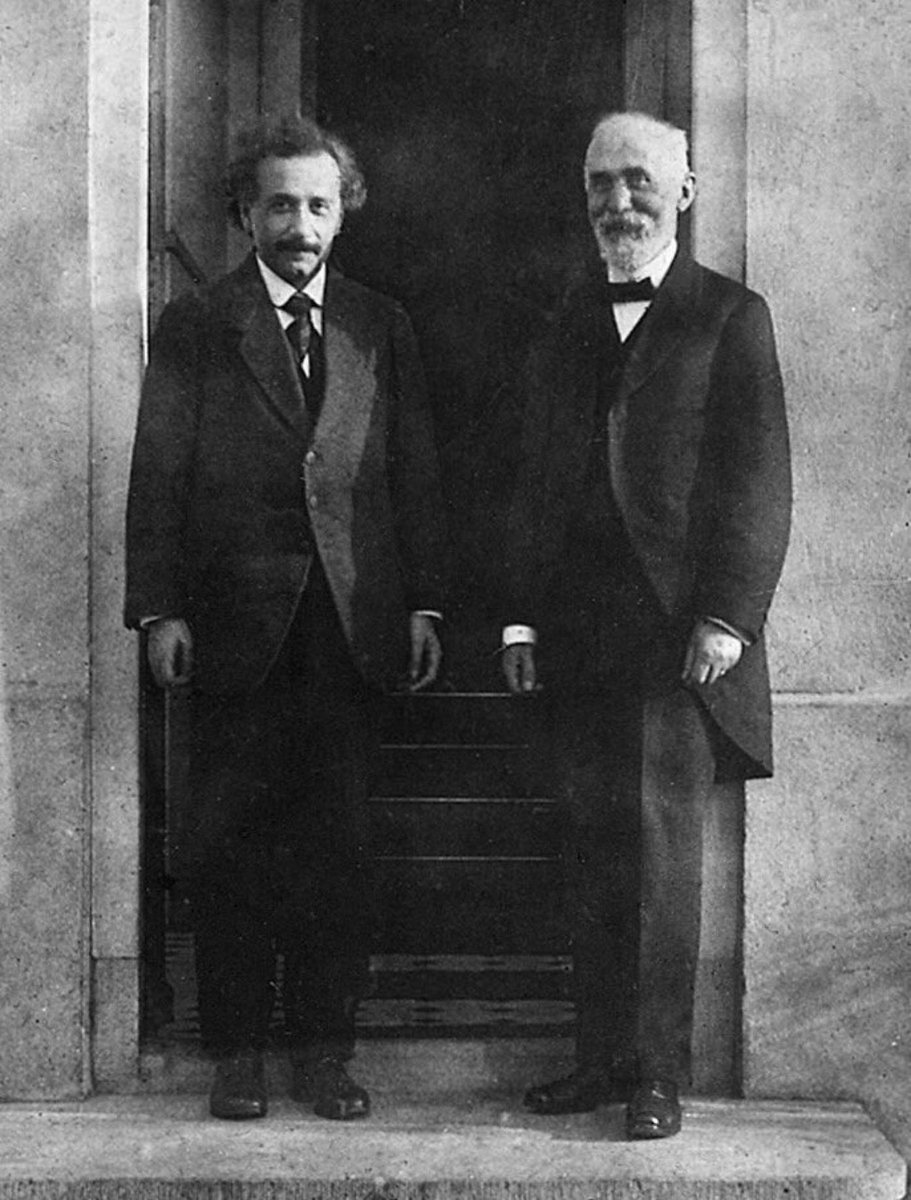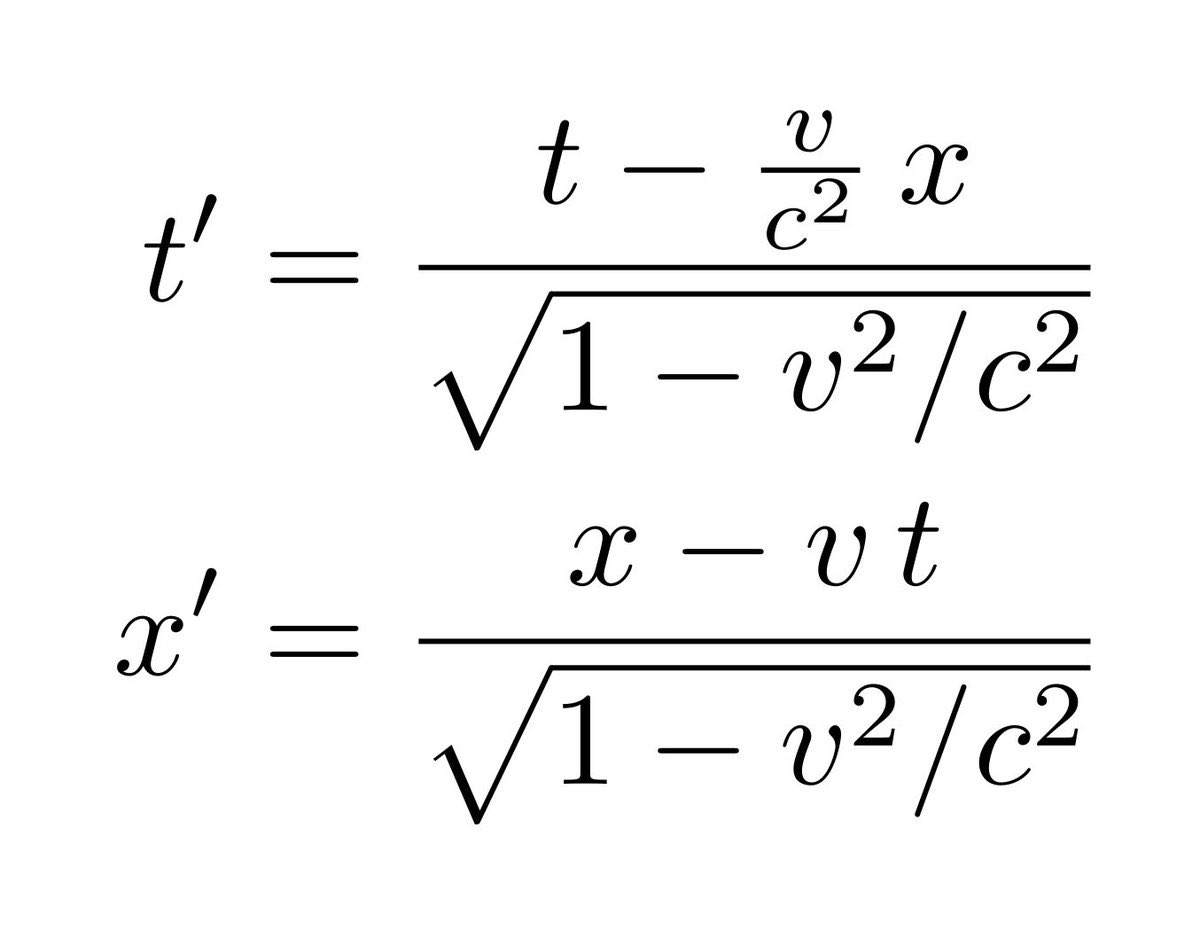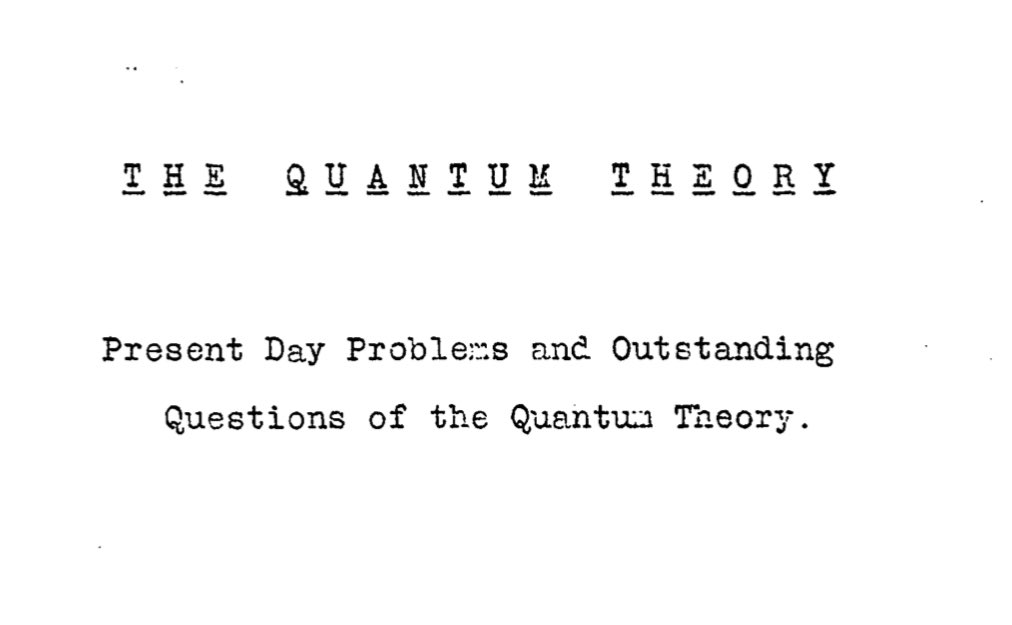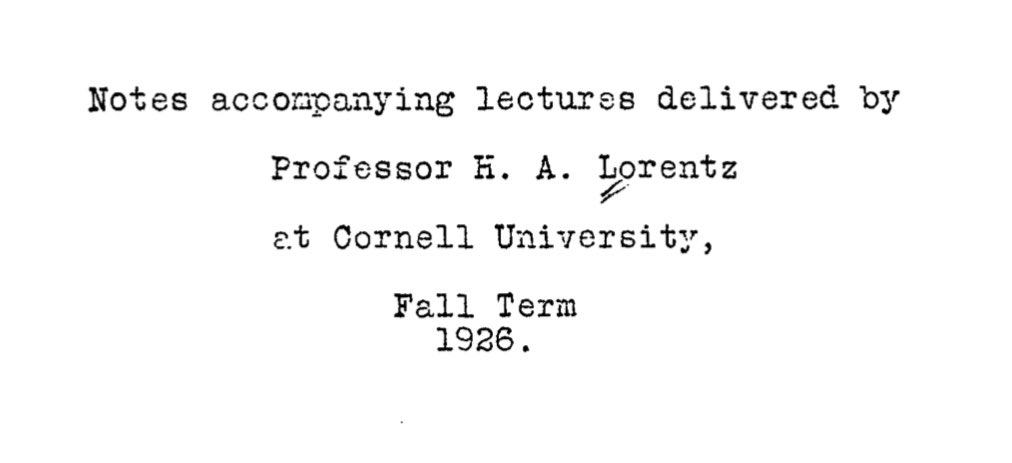The Dutch physicist Hendrik Antoon Lorentz was born #OTD in 1853. Here he is on the right next to an unidentified German scientist, probably one of his many admirers.
Photo: Paul Ehrenfest (1921), via Museum Boerhaave, Leiden
Photo: Paul Ehrenfest (1921), via Museum Boerhaave, Leiden
Lorentz — not to be confused with Lorenz! — was revered for his command of 19th century physics. But he was too attached to those ideas to completely resolve the paradoxes that led Einstein to special relativity.
Lorentz was only 24 when he became the chair of theoretical physics at the University of Leiden. Throughout his lifetime he was considered by many to be the preeminent theoretical physicist in Europe.
(Department Chair at 24 is a curse I wouldn’t wish on anyone, but this was an entirely different sort of position.)
Einstein said of Lorentz: "For me personally he meant more than all the others I have met on my life's journey." Why was he such an important figure?
In 1896 Zeeman discovered that spectral lines were broadened (split, really) by a strong magnetic field. Lorentz provided a theoretical explanation for Zeeman’s observation, and together they won the second Nobel Prize in Physics in 1902.
Of course, Lorentz lacked quantum mechanics at the time, so the explanation wasn’t quite right. But no one knew about quantum mechanics in 1896, so I suppose we have to chalk that Nobel up to an award for effort.
Imo, Lorentz’s most important contributions began around 1890, as physicists puzzled over the null result of 1887’s Michelson-Morley experiment.
Lorentz had done important work on the theory of electrodynamics proposed by Maxwell in the 1860s. He sought to derive macroscopic properties of objects from a microscopic treatment of their charged constituents interacting via electromagnetism.
He was the first person to correctly identify the force on a charge moving through electric and magnetic fields. We call this the “Lorentz force law,” and present it alongside Maxwell’s equations as one of the fundamental statements of electrodynamics.
But back to Michelson-Morley! Their experiment was supposed to demonstrate the motion of the Earth through the aether. Aether was a hypothetical substance, the medium that physicists assumed was needed for the propagation of electromagnetic waves described by Maxwell’s equations.
Except... they didn’t find it. No matter which way they oriented their intereferometer, no matter what time of year they performed their experiment, they found no evidence of aether.
Btw, Michelson’s interferometer was a triumph of experimental optics. Interferometry is the basis of many precision experiments, including @LIGO. For more about Michelson see here:
https://twitter.com/mcnees/status/1207672549754179585?s=21 https://twitter.com/mcnees/status/1207672549754179585
https://twitter.com/mcnees/status/1207672549754179585?s=21 https://twitter.com/mcnees/status/1207672549754179585
So physicists were vexed. Where was the aether?
In 1889 G. Fitzgerald suggested Michelson-Morley would be compatible with aether if moving objects change length in the direction of motion.
And in 1892, Lorentz showed that the contracted (L) & uncontracted (L₀) lengths satisfied L = L₀*(1 - v²/(2c²)). The speed of the object is v, which is assumed to be much smaller than c, the speed of light.
Then in 1895, he showed the form of Maxwell's equations was unchanged under an unusual rearrangement of coordinates: x’=x-v*t, t’=t-v*x/c². Here, x and t are the “where and when” assigned to different events, and v is the speed in the x direction. Again, v << c is assumed.
(The assumption v << c makes sense for the situations they were considering. Earth orbits the sun at a speed of about 30 km/s. That's 1/10,000 the speed of light.)
Keeping the form of Maxwell’s equations unchanged was important, because it meant that their predictions, like the speed of light, stayed the same.
This was a profound result! Physicists, though they didn’t realize it, were opening the door to letting go of the Newtonian idea of an absolute time.
Lorentz saw this as more of a convenience or trick. Einstein, however, recognized something deeper in this result. It had a significant influence on his 1905 special relativity paper.
The 1892 and 1895 results are the v << c version of a more complicated result which Lorentz obtained in 1899. Label the where and when that you assign to events by x and t, with v the velocity in the x-direction. Maxwell’s equations are unchanged if you mix these up according to
Today we call these Lorentz transformations. They translate the description of events in one inertial reference frame to another.
Lorentz consolidated his ideas in 1904, but he viewed the result as a theory of electrons subject to *aether-based* electromagnetism. And the work was full of unnecessary and ad-hoc assumptions. He was simply too attached to the 19th century way of looking at things.
Instead, it was Einstein — a great admirer of Lorentz — who confronted the essential reality of this stuff. It led him to special relativity in 1905.
https://twitter.com/mcnees/status/1177202699357622272?s=21 https://twitter.com/mcnees/status/1177202699357622272
https://twitter.com/mcnees/status/1177202699357622272?s=21 https://twitter.com/mcnees/status/1177202699357622272
(Aside: Woldemar Voigt obtained Lorentz’s 1895 result back in 1887, but didn’t develop the ideas as much as Lorentz did. There’s no evidence, afaik, that Lorentz was aware of Voigt’s results.)
As I said earlier, Lorentz didn’t know about quantum mechanics when he gave his explanation of the Zeeman effect. He eventually learned it, though! Here is a typeset copy of Lorentz's 1926 lectures at Cornell on Schrödinger's wave mechanics approach to QM.
http://labs.plantbio.cornell.edu/wayne/pdfs/TheQuantumTheory.pdf
http://labs.plantbio.cornell.edu/wayne/pdfs/TheQuantumTheory.pdf

 Read on Twitter
Read on Twitter






